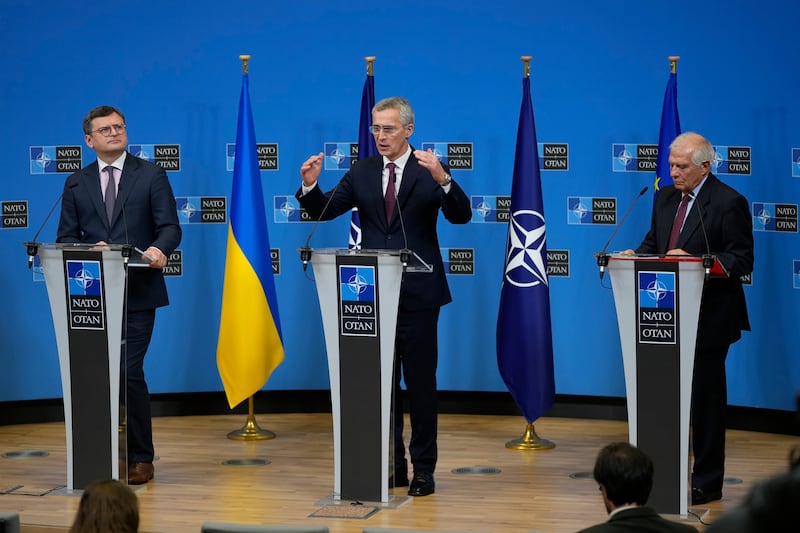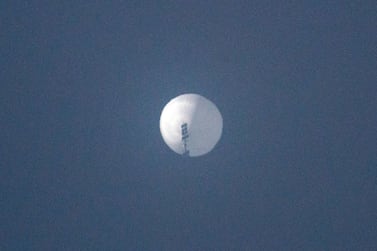For an organisation that French President Emanuel Macron declared “brain dead” just over three years ago, Nato has been mightily active of late. Galvanised by its support for Ukraine in the aftermath of the Russian invasion, Nato’s keenest proponents are calling for the military alliance – or some version of it – to expand way beyond its original geographical remit.
In January Tobias Ellwood, chairman of the influential British House of Commons Defence Select Committee, called for the development of “a 'Nato' for the Asia-Pacific by building on the Aukus and the Quad initiatives” – referring to the trilateral security pact between Australia, the UK and the US in the first instance, and the Quadrilateral Security Dialogue between Australia, India, Japan and the US in the second. “A security alliance should be created to include Australia, India, Japan, New Zealand, the Philippines, South Korea, Vietnam, US, the UK and France,” he wrote.
On Saturday the short-lived UK prime minister Liz Truss gave an interview to Nikkei in which she said that an “economic Nato” should be created, centred on the G7 and including Nato and Asia Pacific countries, in order to defend Taiwan, counter China’s Belt and Road Initiative (BRI), and “make sure we are not allowing freedom and democracy to be undermined by China’s economic policies”.
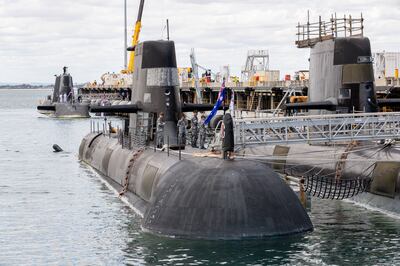
Nato Secretary General Jens Stoltenberg, meanwhile, recently said that the participation for the first time of the leaders of Nato partners South Korea, Australia, Japan and New Zealand at the alliance’s summit in Madrid last June was “a real testimony to our growing ties … We may be oceans apart, but our security is closely connected.” Now the word is that Nato is discussing including the four countries in a joint statement at the end of this year’s summit in Vilnius, Lithuania in July.
I am not alone in suggesting politely that Nato should mind its own business — and keep out of the region. Issues in the Asia-Pacific are complicated. Many, such as the competing claims in the South China Sea, are not binary in nature. The region is home to a variety of different forms of government, and plenty of countries have no interest whatsoever in US President Joe Biden’s framing of the coming decade as a “battle between democracy and autocracy”; nor in interfering in China’s relationship with Taiwan, which Beijing sees as a renegade province; and still less in trying to counter the BRI — because they have happily signed up to it.
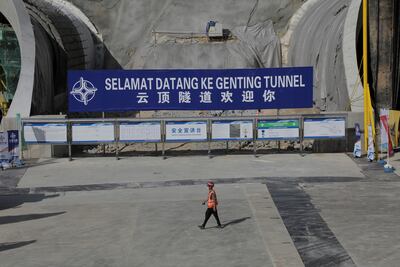
Stability and security in the Asia-Pacific will not be improved through meddling by middling European countries that ought properly to approach the region with humility, given their rapacious colonial histories, and whose current claims to be Pacific powers — the UK’s ownership of the Pitcairn Islands, France’s insistence on maintaining the remnants of its empire in various Indian Ocean and South Sea islands — are both brazen and flimsy.
This is an alliance that had the opportunity to shut shop — since the job was done — after the Cold War; or to have acted responsibly, and brought and bound Russia into a new European security structure 25 years ago, which might have prevented the Ukraine war. But Nato did neither.
The North Atlantic Treaty Organisation — the remit is in the name — is, in any case, an alliance that needs to get its own house in order. Last year official estimates showed that only eight of 30 members were meeting Nato’s target of spending 2 per cent of GDP on defence — a number that had gone down since the previous year.
Turkey, under President Erdogan, has been at odds with Nato’s leadership on important issues, from buying a missile defence system from Russia to blocking Sweden’s accession to the group, to the point that some have called for the country to be expelled. And Nato’s interventions in other parts of the world, such as in Afghanistan and Libya, have not been particularly confidence-inspiring, to say the least.
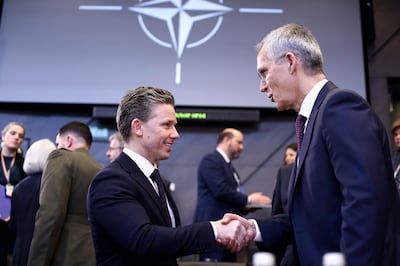
The Asia-Pacific would welcome Nato members trading more with them. There is nothing wrong with the UK’s bid to join the Comprehensive and Progressive Agreement for Trans-Pacific Partnership, for instance. If they could get over their knee jerk Sinophobia, western countries could co-operate with, or even join, the BRI, rather than constantly coming up with new, generally relatively poorly funded, initiatives to compete with it. But further expansion of Nato, or some version of the alliance, into the region would be even more reckless than its relentless advance up to the borders of its one-time, and now current, adversary — Russia.
For the idea that this is a defensive alliance is hollow when its tanks or fleets are outside the front door. Then the distinction between “defensive” and “threatening” is elusive. And it is crystal clear who Nato would be targeting.
As China's Foreign Ministry spokeswoman Mao Ning put it earlier this month: “While claiming to remain a regional defensive alliance, Nato has constantly sought to reach beyond its traditional defence zone and scope, strengthen military and security ties with Asia-Pacific countries, and hyped China threats.” Her conclusion may be the official Chinese position, but many countries in the region would share it. “The Asia-Pacific is not a battlefield for geopolitical contests and does not welcome the Cold War mentality and bloc confrontation.”
Nato’s European members have plenty of problems of their own to sort out. They should concentrate on them rather than itching to send their battleships halfway round the world to a region that has had quite enough of their “assistance” in the past.
